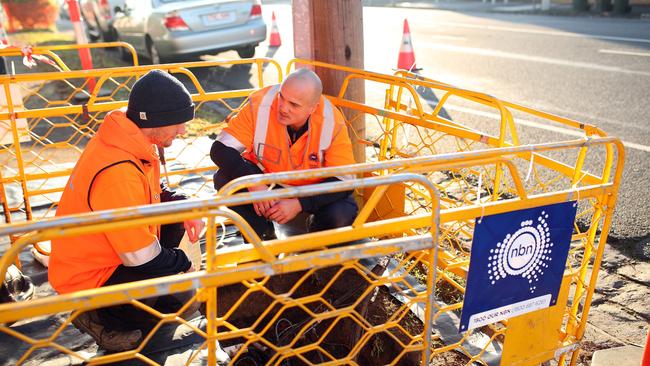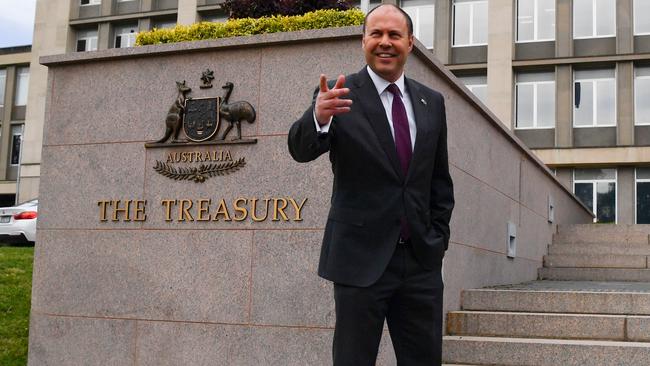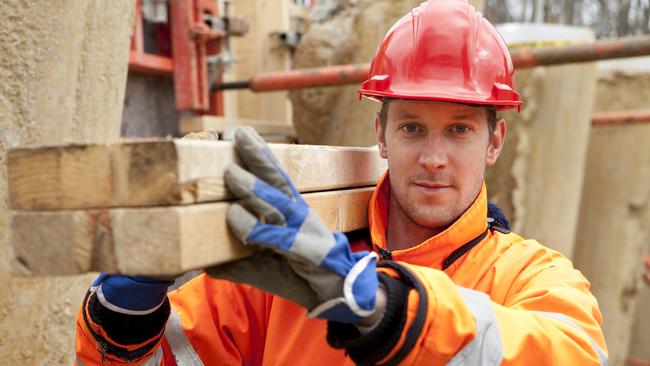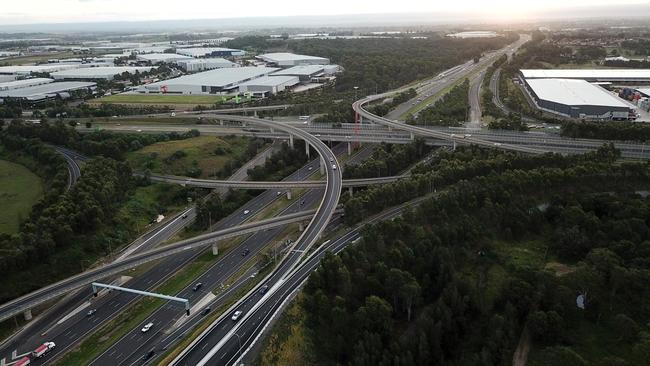Australian federal budget 2020: Tax cuts to revive coronavirus economy
There will be big spending on the NBN and other infrastructure projects revealed in the federal budget tonight to revive the nation’s economy, but billions of dollars in tax cuts will grab the most attention.
NSW
Don't miss out on the headlines from NSW. Followed categories will be added to My News.
Federal Treasurer Josh Frydenberg has arrived at parliament ahead of tonight’s federal Budget, declaring the plan will be all about pushing Australia’s unemployment rate below six per cent.
“In tonight’s budget I will lay out our economic recovery plan to rebuild the Australian economy and secure Australia’s future,” Mr Frydenberg said.
“Our plan will create jobs. This is all about jobs. It is all about helping those who are getting a job, get a job. It is about helping those that are in a job, stay in a job.
“Our plan creates opportunities. Our plan will drive business. Our plan will grow the economy and guarantee the essential services Australia relies on. Our plan will see Australia become a stronger nation.”
Billions of dollars in tax cuts will be brought forward while up to a million new jobs are expected to be mapped out to revive the nation’s economy after it was decimated by the coronavirus crisis.
With a heavy focus on jobs and building for the future, the Morrison government has already mapped out an exhaustive $7.5bn infrastructure package that will be fast tracked while stage two tax cuts will be brought forward and backdated to July 1 – handing $1080 or more into the pockets of most Australians.
There is an extra $4.5bn for the National Broadband Network, a $1.5bn manufacturing plan as well as $1.2bn to help 1000,000 new apprentices enter the workforce.
There will be a deficit over more than $210bn and no hint of a surplus is expected over the next four years at least.

MORE NEWS
When we can eat outside in the CBD again
Shark spotted near Port Macquarie for second time
Home And Away star: ‘Alcohol was my poison’
A massive $1 trillion gross debt is also expected to be forecast over the long-term as the Morrison Government’s more than $314 billion response to the coronavirus pandemic takes its toll.
Leading economists say the budget will look to create about 450,000 jobs over the next year to counteract the JobKeeper wage subsidy tapering off and help Australians looking to return to the workforce amid a recession.
Previously announced measures are expected to create close to 200,000 direct and indirect jobs, but to reach its target of “comfortably” under six per cent unemployment the government will need to chase down a million new positions over the forward estimates.
AMP chief economist Shane Oliver said in addition to direct spending generating jobs “upfront”, Treasurer Josh Frydenberg will be banking on an extra boost from bringing forward income tax cuts and creating further investment incentives.

“I’d say it’s in the range of 450,000 and one million ultimately is what the government would like to either directly create or indirectly help create,” he said.
“We’re still down about 450,000 where we were pre-COVID and to protect those jobs still being held together by Jobkeeper you’d want to aim higher than that.”
During the pandemic 1.3 million people lost their job or were stood down to zero hours.
Of the 870,000 who actually lost their job, about half have been able to return to work as the economy reopened.
The dire jobs figures would have been significantly worse without the JobKeeper wage subsidy, which about 3.5 million Australians gained access to in the first six months of the COVID-19 shutdown.
EY Oceania chief economist Jo Masters told The Daily Telegraph one of the key jobs challenges for the government would be ensuring businesses create entirely new roles, rather than simply boost the hours of existing employees.

“We need as many Australians back in work as we can as a net new number of people employed,” she said.
Ms Masters said when EY modelled the impact of a $40bn infrastructure spend, bringing forward stage two income tax cuts and extending JobSeeker — a policy package totalling $60bn — they found it would drive down unemployment in Australia by one per cent over two years.
“More than half of that would come from the $40bn infrastructure spend,” she said.
“And it’s more than just transport and maintenance, it can be social investment, digital and other direct infrastructure spending.”
Ms Masters said she believed the government’s focus on jobs creation was the “right one”.
“People feel a recession through the jobs market much more than GDP growth,” she said.
Deloitte Access Economics chief economist Chris Richardson said to get Australia “comfortably” below six per cent unemployment, the number of people without work would have to drop to about 850,000.
“We’re currently only at 922,000 unemployed but the bad news is it gets worse before it gets better,” he said.
“Our forecasts show that number peaks at about 1,180,000 … so to get that down to 850,000 that’s a difference of 330,000 jobs you’re looking to create.”

Mr Richardson said Deloitte’s modelling showed Australia would likely return to six per cent unemployment by 2024.
“If you bring forward to tax cut you’re probably going to get 40,000 jobs … but to get that 350,000 or so you need is not going to be easy.
Among the measures already announced by the federal government, the $7.5bn infrastructure spend is expected to generate 30,000 direct and indirect jobs alone over the next four years, while the $1.2bn apprentice wage subsidy will support 100,000 jobs.
A $4.5bn upgrade to the NBN is tipped to create 25,000 jobs.
Treasury has also estimated the previously announced HomeBuilder scheme will create 9,600 jobs.
The second stage income tax cuts are expected to be backdated to July 1, 2020 which would give middle income earners a $1080 boost.
It is expected the budget deficit will hit at least $210bn, and the government will lift the nation’s debt ceiling to $1.1 trillion to cover the debt generated by the crisis.
